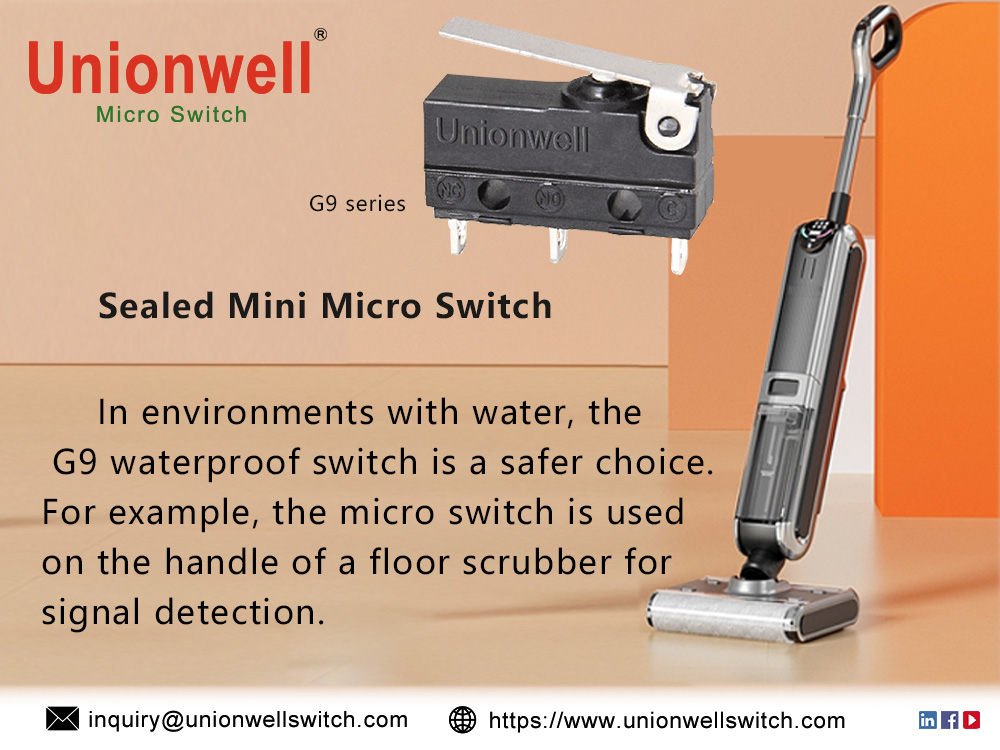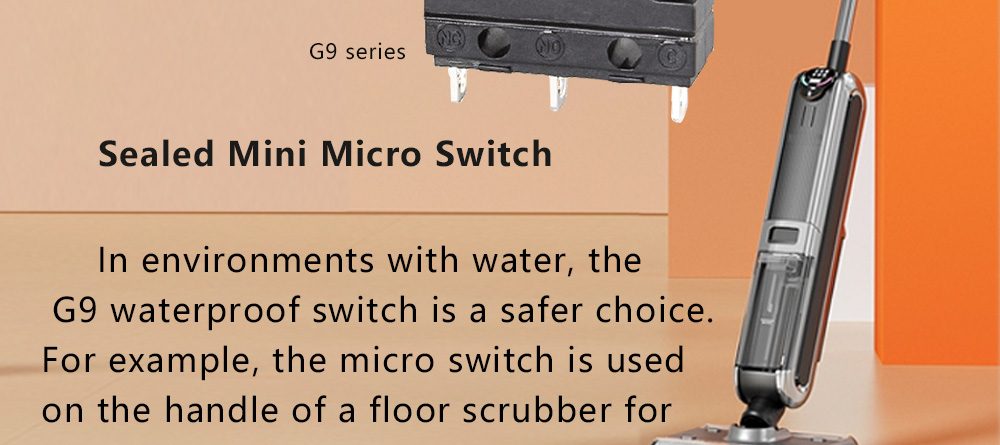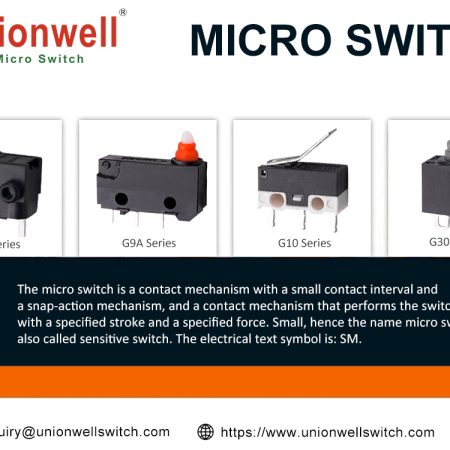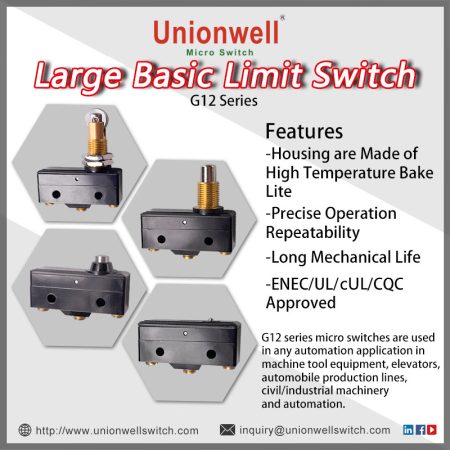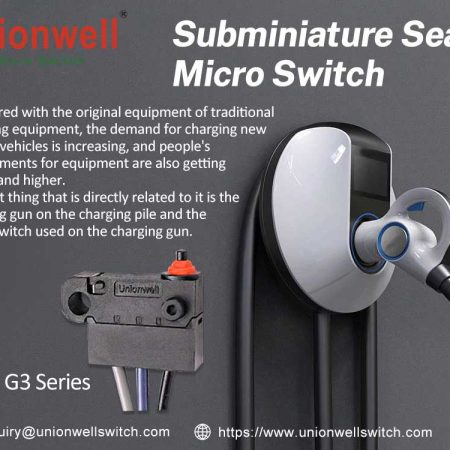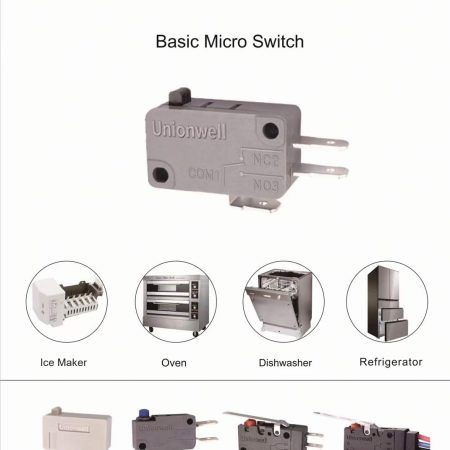Waterproof Miniature Switches: Key to Reliable Electrical Control
Introduction
Waterproof miniature switches are a crucial component in numerous electrical systems where exposure to moisture, water, or other liquids may occur. These switches are designed with a high level of waterproofing to ensure that the internal components remain dry and function properly, even in the most rugged environments.
1. Definition of Waterproof Miniature Switches
Waterproof miniature switches are small, moisture-resistant electrical switches that are typically used in confined or tight spaces where moisture or liquids may be present. These switches are designed to prevent moisture, water, or other liquids from entering the switch housing and interfering with the internal components. This is achieved through the use of special seals, gaskets, and tight-fitting joints that create an airtight seal around the switch components.
2. Importance of Waterproofing in Electrical Switches
The importance of waterproofing in electrical switches cannot be overstated. Moisture and liquids can cause corrosion, short circuits, and electrical failure within switches, leading to system downtime or unreliability. Waterproof miniature switches prevent these issues by sealing out moisture and liquids, ensuring reliable operation in a wide range of environments.
3. Benefits of Using Waterproof Miniature Switches
The benefits of using waterproof miniature switches are numerous. Here are some key benefits:
Reliability: Waterproof miniature switches are designed for dependable performance in adverse environments, including exposure to moisture, water, and other liquids. The hermetic sealing design ensures that the internal components remain dry and function properly.
Compact Size: These switches are designed to occupy a minimal amount of space, making them ideal for confined or tight spaces where moisture may be present.
Easy Installation: Waterproof miniature switches typically have a simple design and are easy to install, reducing the potential for errors during installation.
Cost-Effective: While initial purchase costs may be slightly higher than non-waterproof switches, the long-term cost is lower due to their reliability, durability, and reduced maintenance requirements.
Versatility: Waterproof miniature switches are suitable for use in a wide range of industries and applications, including outdoor equipment, automotive components, marine equipment, aerospace applications, and more.
In short, waterproof miniature switches play a critical role in various electrical systems where exposure to moisture, water, or other liquids may occur. Their hermetic sealing design ensures reliable performance in rugged environments, compact size for tight spaces, ease of installation, cost-effectiveness, and versatility make them a popular choice for numerous applications.
Waterproof Miniature Switch Design
Waterproof miniature switches are designed to operate reliably in damp, wet, or submerged environments without internal damage or corrosion. The design of these switches involves various parts and waterproof features that ensure their dependability and durability.
1. Component Parts and Their Functions
Housing: The housing forms the outer shell of the switch and provides the necessary protection against external elements. It is typically made of a robust material such as metal or plastic and houses all the internal components of the switch.
Contact Assembly: The contact assembly is responsible for completing the electrical circuit when the switch is actuated. It typically consists of a fixed contact and a movable contact that come into contact with each other when the switch is operated.
Operating Mechanism: The operating mechanism is responsible for actuating the switch. This could be a pushbutton, a lever, or a rocker, depending on the type of switch. It mechanically links the external actuator to the internal contacts, allowing them to come into contact with each other.
Waterproof Sealing Material: Waterproof sealing material is used to seal the joints and seams of the switch housing to prevent moisture from entering the switch housing. The sealing material should be able to withstand the high temperatures and mechanical stresses during the operation of the switch.
2. Waterproof Design Features
Hermetic Sealing: Hermetic sealing is a sealing method that provides an absolute seal, preventing any moisture or gases from passing through. In waterproof miniature switches, an airtight seal is achieved by using a glass-to-metal seal or a metal-to-metal seal between the housing and the internal components.
Water-resistant Sealing Ring: Water-resistant sealing rings are used in the joints and seams of the switch housing to provide a secondary barrier against moisture entry. These rings are typically made of an elastomeric material that provides good sealing properties even at low temperatures and under mechanical stress.
O-ring Sealing: O-ring sealing is a common method used to seal circular gaps. An O-ring is a toroidal seal made of rubber or another elastomeric material that fits snugly into a groove around the gap to be sealed. In waterproof miniature switches, O-rings are used to seal the gap between the housing and the operating mechanism or between the housing and the cable connector.
To sum up, waterproof miniature switches are designed with special features that allow them to operate reliably in damp, wet, or submerged environments. The parts and their functions, as well as the waterproof design features, ensure their dependability, durability, and safety in various applications.
Comparative Analysis of Waterproof Miniature Switches and Conventional Switches
Waterproof miniature switches offer unique advantages over conventional switches in various applications where exposure to moisture, water, or other liquids is present. In this part, we will perform a comparative analysis between waterproof miniature switches and conventional switches, evaluating their waterproof performance, size and weight, operating stability and reliability, and cost.
1. Waterproof Performance Comparison
Waterproof miniature switches are designed to withstand exposure to moisture, water, or other liquids while maintaining reliable electrical performance. They achieve this through the use of special seals, gaskets, and tight-fitting joints that create an airtight seal around the switch components. This design ensures that the internal components remain dry and function properly, even in the most rugged environments. On the other hand, conventional switches may not be as waterproof and are susceptible to moisture, water, or other liquids, which can lead to corrosion, short circuits, and electrical failure.
2. Size and Weight Comparison
Waterproof miniature switches are designed to occupy a minimal amount of space while maintaining a robust and dependable performance. This allows them to be easily integrated into confined or tight spaces where moisture or liquids may be present without any compromise in performance or reliability. Conventional switches, on the other hand, may not be as compact and may require more space for installation and operation. However, they may still be suitable for certain applications where waterproof miniature switches may not be necessary.
3. Operating Stability and Reliability Comparison
Waterproof miniature switches are designed for dependable performance in adverse environments, including exposure to moisture, water, and other liquids. Their hermetic sealing design ensures that the internal components remain dry and function properly. Additionally, these switches are typically made of high-quality materials that provide good mechanical and electrical stability, leading to a longer lifespan and lower maintenance requirements. Conventional switches may not offer the same level of dependability and may require more frequent maintenance due to their susceptibility to moisture and other liquids.
4. Cost Comparison
The initial cost of waterproof miniature switches may be higher than that of conventional switches due to their specialized design and material requirements. However, when considering the overall cost of ownership over time, waterproof miniature switches may prove to be more cost-effective. The higher initial cost is offset by their reliability, durability, and reduced maintenance requirements, leading to a lower total cost of ownership over the life cycle of the switch. Conventional switches may require more frequent maintenance due to moisture and liquid exposure, leading to higher maintenance costs over time.
5. Summary of Comparative Analysis
In conclusion, waterproof miniature switches offer unique advantages over conventional switches in terms of waterproof performance, size and weight, operating stability and reliability, and cost. While the initial cost may be higher, their dependability, durability, and reduced maintenance requirements make them a cost-effective solution over the life cycle of the switch. The ability to withstand exposure to moisture, water, or other liquids while maintaining reliable electrical performance makes them suitable for various rugged environments where conventional switches may not be suitable.
Unionwell Product Description
Unionwell G9 Series Sealed Mini Micro Switch is one of the hot sale waterproof switches. Our micro switches are high-precision, snap-action switches, and these are the main features for which they are notable:
- Dustproof and waterproof design (IP67)
- High electrical ratings but small dimensions
- High repeat accuracy of switching points and forces
- Very long service life, high reliability
- Variety of terminals and levers
- Widely used in numerous applications, such as automotive, appliance, and other industries.
